
Werner Herzog is a German filmmaker, actor, opera director, and author. Regarded as a pioneer of New German Cinema, his films often feature ambitious protagonists with impossible dreams, people with unusual talents in obscure fields, or individuals in conflict with nature. His style involves avoiding storyboards, emphasizing improvisation, and placing his cast and crew into real situations mirroring those in the film they are working on.
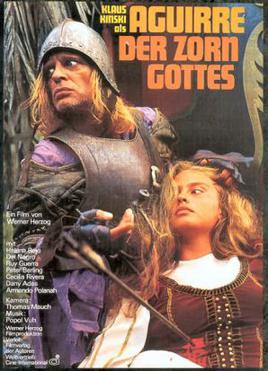
Aguirre, the Wrath of God is a 1972 epic historical drama film produced, written and directed by Werner Herzog. Klaus Kinski stars in the title role of Spanish soldier Lope de Aguirre, who leads a group of conquistadores down the Amazon River in South America in search of the legendary city of gold, El Dorado. The accompanying soundtrack was composed and performed by kosmische band Popol Vuh. The film is an international co-production between West Germany and Mexico.

Hohenwerfen Castle is a medieval rock castle, situated on a 623-metre (2,044 ft) precipice overlooking the Austrian market town of Werfen in the Salzach valley, approximately 40 kilometres (25 mi) south of Salzburg. The fortress is surrounded by the Berchtesgaden Alps and the adjacent Tennen Mountains. Hohenwerfen is a "sister" of Hohensalzburg Fortress, both built by the Archbishops of Salzburg in the 11th century.

Kronach is a town in Upper Franconia, Germany, located in the Franconian Forest area. It is the capital of the district Kronach.

Ehrenbreitstein Fortress is a fortress in the German state of Rhineland-Palatinate, on the east bank of the Rhine where it is joined by the Moselle, overlooking the town of Koblenz.

Deutschkreutz is an Austrian market town in the district of Oberpullendorf in the state of Burgenland.

The Fortress of Luxembourg is the former fortifications of Luxembourg City, the capital of the Grand Duchy of Luxembourg, which were mostly dismantled beginning in 1867. The fortress was of great strategic importance for the control of the Left Bank of the Rhine, the Low Countries, and the border area between France and Germany.
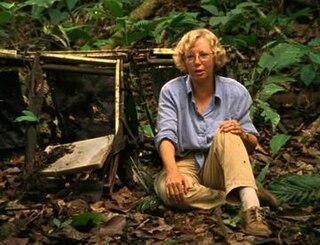
Wings of Hope is a 1998 made-for-TV documentary directed by Werner Herzog. The film explores the story of Juliane Koepcke, a German Peruvian woman who was the sole survivor of Peruvian flight LANSA Flight 508 following its mid-air disintegration after a lightning strike in 1971. Herzog was inspired to make this film since he had narrowly avoided taking the same flight while he was location scouting for Aguirre, the Wrath of God; his reservation had been canceled due to a last minute change in itinerary.

Herakles (Heracles) is a 1962 short film and the first film by the German director Werner Herzog, then 19 years old.
Gesualdo: Death for Five Voices is a 1995 film by German director Werner Herzog filmed for ZDF television. The film explores the music of Carlo Gesualdo and the legends surrounding Gesualdo's personality, his cursed castle, and his murder of his wife and her lover. Between narration and interviews, several of Gesualdo's madrigals are performed. Herzog calls Death for Five Voices "one of the films closest to my heart."
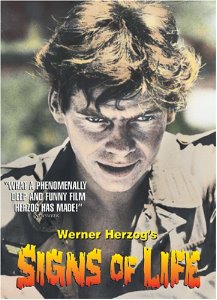
Signs of Life is a 1968 feature film written, directed, and produced by Werner Herzog. It was his first feature film, and his first major commercial and critical success. The story is roughly based on the short story "Der Tolle Invalide auf dem Fort Ratonneau" by Achim von Arnim.
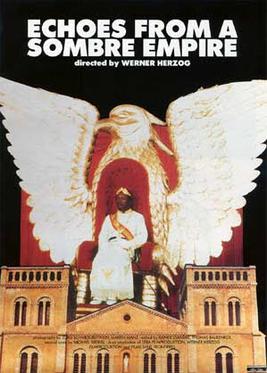
Echoes From a Sombre Empire is a documentary film by Werner Herzog about Jean-Bédel Bokassa.

The defense of Brest Fortress was the first battle of Operation Barbarossa, the Axis invasion of the Soviet Union launched on 22 June 1941. The German Army attacked without warning, expecting to take Brest on the first day, using only infantry and artillery, but it took them a week, and only after two bombardments by the Luftwaffe. Many defenders were killed or captured.

Scream of Stone is a 1991 film directed by Werner Herzog about a climbing expedition on Cerro Torre. The film was shot on location at Cerro Torre, with several scenes filmed close to the summit.

Landestrost Castle is a castle in the Weser Renaissance style that was built between 1573 and 1584 in Neustadt am Rübenberge in the north German state of Lower Saxony. Integrated into fortifications, together with the town, it developed into an urban fortress typical of the 16th century. The castle was the representative residence and administrative headquarters of its master, Duke Eric II of Brunswick-Lüneburg. During the construction period from 1574 he renamed the town of Neustadt as Landestrost, something which was reverted after his death in 1584.
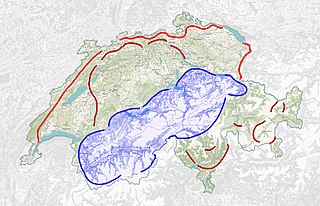
The Swiss National Redoubt is a defensive plan developed by the Swiss government beginning in the 1880s to respond to foreign invasion. In the opening years of the Second World War the plan was expanded and refined to deal with a potential German invasion. The term "National Redoubt" primarily refers to the fortifications begun in the 1880s that secured the mountainous central part of Switzerland, providing a defended refuge for a retreating Swiss Army.

The German 291st Infantry Division, was an infantry division of the Wehrmacht and served in World War II.
Werner E. Ablaß is a German politician who was a Christian oppositionist in East Germany (GDR). Together with minister Rainer Eppelmann, Secretary of State in the Ministerium für Abrüstung und Verteidigung (MfAuV), Ablaß played a major role in the closure of the National People's Army (NVA) during the German reunification.

Rothenberg Fortress is a fortress on the eponymous hill, 588 m, near Schnaittach in the Franconian Jura.

Rosenberg Fortress is a fortress situated on a hill overlooking Kronach, a town in the Upper Franconia region of Bavaria, Germany. It is one of the largest, best-preserved, and most complete fortresses in Bavaria. Tracing its origins back to the 13th century, the fortress was never captured by violent means. Originating as a medieval hill castle, it was transformed into a massive baroque fortress complex during the early modern period, being one of the two fortresses of the Prince-Bishopric of Bamberg. With countless construction stages representing centuries of architectural development visible, Rosenberg Fortress serves as an outstanding example of the evolution of defensive architecture in Germany. Including its moats and ravelins, the fortress covers an area of circa 8.5 hectares.


















